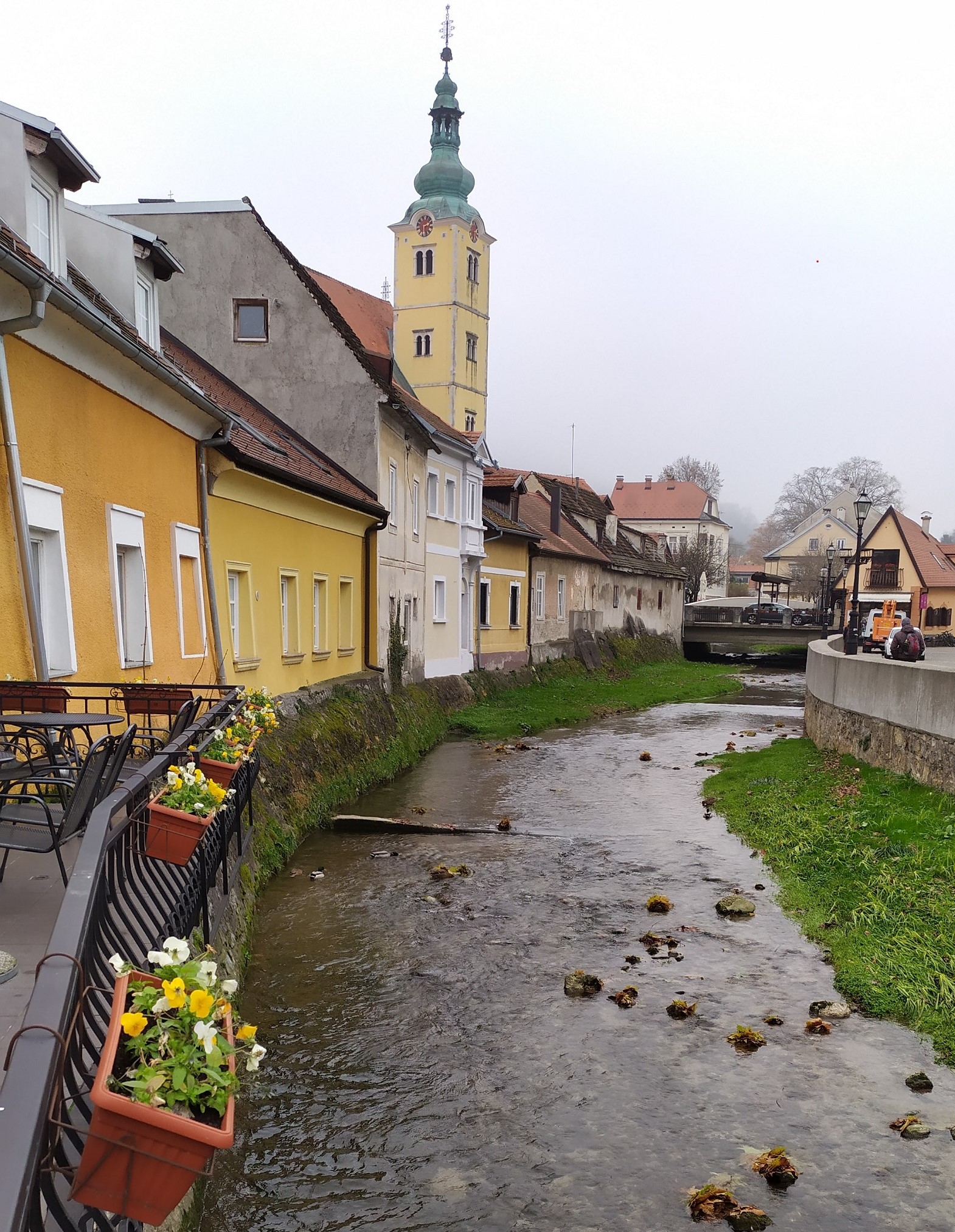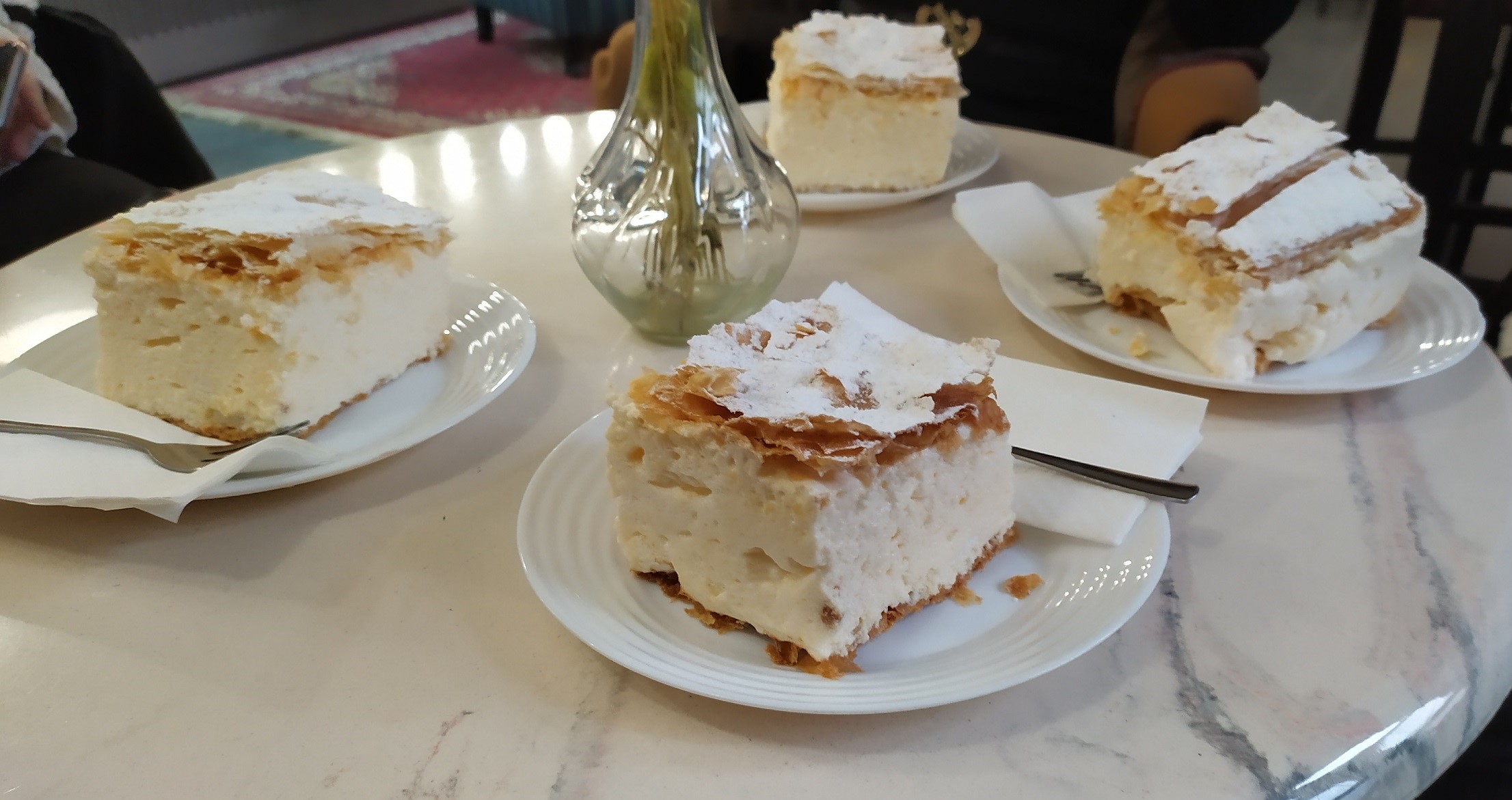Samoborska Kremsnita Awarded Status of Intangible Cultural Good!
February 2, 2021 – According to the Ministry of Culture and Media's decision, the traditional dessert samoborska kremsnita, as well as the transfer of skills, practices, and traditions of confectionery, has received the status of an intangible cultural good. It will be inscribed in the Register of Protected Cultural Heritage of the Republic of Croatia.
As reported from the City of Samobor, the most popular local dessert, samoborska kremšnita, is now legally protected as an autochthonous Samobor and Croatian brand. As of January 18, 2021, samoborska kremšnita wears the title of intangible cultural property of Croatia.
As the Ministry explained, this dessert made of puff pastry and whipped egg cream is known by various names and variants in Central and Mediterranean countries. One of the most famous in Croatia comes from Samobor.
The original recipe was created in the 1920s by confectioner Đuro Lukačić, who prepared them until 1966, after which he assisted in their making. Two confectioners, Višnja Vukmanović and Branka Žganjer transferred the original recipe and knowledge to Kavana Livadić and the pastry shop "U prolazu," which are also holders of the intangible cultural property.

Samobor / Donatella Pauković
The tradition of making samoborska kremšnita is cherished in these pastry shops to this day so that this foamy dessert is enjoyed by many visitors, guests, tourists, excursionists, and mountaineers.
The queen of all cakes is how she is called in Samobor. Samoborska kremsnita is one of the symbols and the first association with Samobor in Croatia and abroad. It's a dessert that encourages people to visit. It is almost unthinkable to visit Samobor and not taste a nice light yellowish cream between the crispy puff pastry.
Sometimes, you must wait in line for samoborska kremšnita, but that is fine. It is brought home as a souvenir from Samobor, even if it has cooled down on the way.
There are several recipes for this cake, but samoborska kremšnita is unique because of its preparation and the Samobor ambiance that should be enjoyed while eating it.
The samoborska kremšnita is truly an exceptional dessert worthy of admiration. It also testifies that it was, along with popular Croatian cake mađarica, recently declared one of the 100 most popular cakes in the world according to the TasteAtlas portal, taking 84th place on their list.

Samoborska kremšnita enjoyed in one of Samobor's pastry shops / Donatella Pauković
However, samoborska kremšnita is not the first dessert from the Samobor area that received this title. Namely, a salty cake originating from the village of Ruda near Samobor named rudarska greblica was also declared a protected intangible cultural good. According to tradition, this cake used to be prepared back in the 16th century when mining flourished in Rude. Their wives made this cake for local miners. The "Days of Rudarska Greblica" event has been held in the village of Rude for years.
Since it is impossible to travel and taste traditional dishes of different destinations due to the ongoing coronavirus pandemic, you can always try to make samoborska kremšnita yourself at home. Of course, nothing can replace a visit to Samobor and tasting traditional kremšnita in the ambiance of this beautiful medieval town, but until we can do it again, use your time to try this recipe.
Intangible Heritage of Croatia – Cheesecloth Cheese – Sir iz Mišine
December the 7th, 2018 - The intangible heritage of Croatia is complex and varied, so let us take a look at yet another one, which involves cheese. The preparation of cheesecloth cheese, locally called sir iz mišine, is a long tradition in Dalmatian inland, Dinara, Velebit, Lika, and the western Herzegovina area.
When the initial production of this piece of intangible heritage of Croatia first began isn't known, but even the ancient Illyrians prepared this type of sheep cheese. One of the theories says that production began when milk stored in sheep paunches accidentally started the fermentation process. This kind of milk had whey and cheese, which during that time, became a tradition to make.
.jpg)
The way of making the cheese hasn’t changed much from the beginning. Back then, the cheese was made from whole sheep milk but today it's done with skimmed sheep, goat, or cow milk too. It is preserved in sheep or goat paunches which gives it its typical smell and spicy flavour. It is usually produced during summer from extra sheep milk and it can be consumed from autumn onwards.
In order to make this cheese, one should follow several procedures. First, the paunch should be appropriately prepared, then the milking should be done and milk preparation should follow right after it. The whey should be prepared too. Making and preparing the sheep or goat paunch is important as it ensures good cheese making. The paunch should be properly washed, disinfected and dried from 15 to 30 days.
Knowledge and skill with regard to this craft is traditionally inherited from generation to generation. When everything is ready, the brewing process can start and the product can be stored in the paunches. Finally, the stored cheese needs to age, and then it is ready.
.jpg)
The brewing begins right after the milking and the brewing time depends on the temperature (ranges from 31-35°C to 35-40°C) and the strength of the whey. When the mixture forms a certain structure, the first layer is turned over to even up the temperature of the whole batch, then, it is cut into cubes and should rest until the whey turns into a greenish – yellow colour.
This cheese mass is then put in cloths and subsequently pressed.
After pressing the cheese, salt is added until there is enough cheese to be put into the paunch. If the paunch is filled with cheese one-time only, this ensures better quality. When the paunch is filled, the cheese is shredded and then crumbled. It is important to remove all the air from the paunch to ensure that it matures in controlled conditions (12-15°C). It takes 2-3 months to achieve its specific characteristics and to be ready for consumption.
.jpg)
To produce one kilogram of cheese, you'd need 7-8 litres of skimmed milk or 7-9 litres of fresh sheep or mixed sheep/cow milk. To produce 12 to 15 kg of cheese and 7-8 litres of slurry, you would need 100 litres of whole sheep's milk. The mature cheese is then taken out of the paunch and stored in low temperatures with the appropriate humidity and level of hygiene.
.jpg)
The area where this cheese is made is usually agricultural regions where you can find livestock like sheep, lambs, and goats. To keep this tradition going and in order to continue this type of cheese production, it is important to help to preserve small family businesses and agricultural estates which are involved in making it.
Nowadays, there are some differences in production as the sheep and milk used are different from the traditional type. In addition, technology is used to produce the cheese which makes it higher quality in the modern day.
Despite technology's influence, it is important to preserve most of the traditional ways of making the cheese active by passing down knowledge of this tradition. The final product is often a very rare find on markets and in stores but it can be found on agricultural estates and villages where they still make it.
.jpg)
Make sure to follow our lifestyle page for more information on the intangible heritage of Croatia and much more.
Intangible Heritage of Croatia – Ćupter – Traditional Wine Jelly Candy
Learn how to make the candy of Croatia's past!
Intangible Heritage of Croatia - Decoration of Easter Eggs with ''Oplet'' Technique
Easter is upon us once again, time to look at more of Croatia's intangible heritage which ties in with this festive period.
Intangible Heritage of Croatia - Decoration of Easter ''Pisanice'' Eggs
Will you be painting eggs this year?
Intangible Heritage of Croatia - Lastovski Poklad
TCN's Filipa Marušić gives us an intimate look at one of the island of Lastovo's incredible pieces of cultural heritage.
Intangible Heritage of Croatia: Annual Carnival Pageant from Villages at Foot of Kamešnica Mountain
TCN's Filipa Marušić gives us a closer look at some more of Croatia's incredible intangible heritage...
Cukerančići: Sweet Biscuits of Pazin Protected as Intangible Cultural Heritage
One of the most delicious Istrian desserts is now a part of the list of the intangible cultural heritage in Croatia


